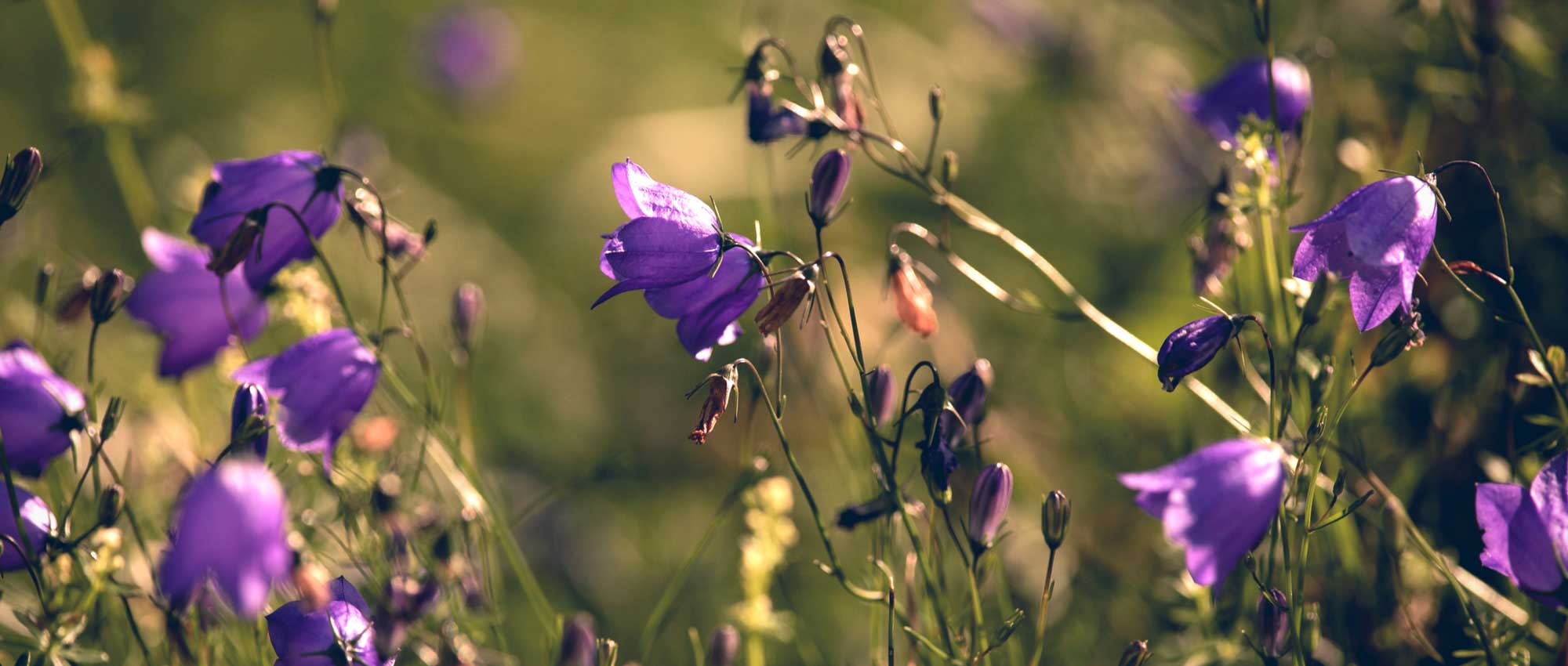
Campanulas: planting, growing and care
Contents
Campanula in a nutshell
- The campanula charms with its generous flowering in bell-shaped blooms, often blue-purple!
- It offers very delicate flowers, either bell-shaped or star-shaped.
- The different species have very varied forms: they can be trailing, ground-covering, or upright.
- In the garden, they are suitable for almost all uses: in rockeries, on a wall, in a perennial bed, in pots or window boxes, in a woodland garden, etc.
- It is an easy plant to cultivate, ideal for beginners.
A word from our Expert
The campanula is a often perennial plant that offers abundant and long-lasting flowering! It is mainly known for its blue or mauve flowers, but it can also be white or pink depending on the variety. With its bell-shaped, drooping flowers, the campanula has a delicate and fragile appearance, evoking emotion… It is a very simple flowering, yet it is not lacking in charm! The campanula can be very tall (up to 2 m), with an upright habit and flowering in spikes, but it can also be ground-covering, forming cushions that are covered in flowers, as seen in wall campanula or Carpathian campanula.
Their use in the garden is very varied: the taller varieties, such as Campanula persicifolia or Campanula glomerata, will be planted in borders, while the smaller Campanula portenschlagiana or carpatica are more suited for rockeries or low walls. Others will be ideal for edging, in woodlands, or in window boxes on a windowsill… Campanulas are versatile plants, suitable for a wide range of uses!
The campanula is a very easy plant to grow. Not demanding, it also requires very little maintenance (or none at all, for example with Campanula muralis). We recommend planting it in full sun or partial shade, in well-draining and light soil. It can easily be propagated by sowing, division, or propagation by cuttings… and sometimes self-seeds spontaneously!
Description and botany
Botanical data
- Latin name Campanula sp.
- Family Campanulaceae
- Common name Bellflower
- Flowering spring or summer
- Height very variable, between 5 cm and 2 m
- Exposure sun or partial shade
- Soil type draining, rocky, or even dry for creeping bellflowers; fertile and cool for large bellflowers
- Hardiness down to -20 °C for most varieties
The bellflower is a perennial, annual or biennial plant, native to temperate regions of the Northern Hemisphere, which explains its good hardiness. There are over 400 species! They can be found particularly in the Alps and around the Mediterranean, where they grow in a variety of environments: in sunny undergrowth, in meadows, along paths, on rocky slopes, sometimes on low walls… In France, in the wild, one can encounter about thirty species. Most cultivated bellflowers are perennials, although there are also biennials, such as Campanula medium, or annuals, like Campanula macrostyla, which are much less common. Despite their delicate and fragile appearance, bellflowers are actually quite robust plants. Most are perfectly hardy.
Its Latin name, Campanula, means little bell, or bellflower. It of course alludes to the shape of the flowers. The term “campanulate” has been retained to describe flowers whose appearance resembles the bells of the bellflower.
The bellflower belongs to the family Campanulaceae, which it has given its name. This family includes about 2,400 species, including Phyteuma (rampion), Platycodon, Lobelia, Brighamia (an indoor plant also known as Hawaiian Palm), or Legousia (like the Venus’s Looking Glass, which grows in the wild in France)… Within the Campanulaceae, some genera are very close to bellflowers, with flowers that resemble them a lot: Adenophora, Canarina, Platycodon… The latter, the Platycodons, are beautiful ornamental plants, sometimes cultivated in gardens, that bear large star-shaped blue flowers.
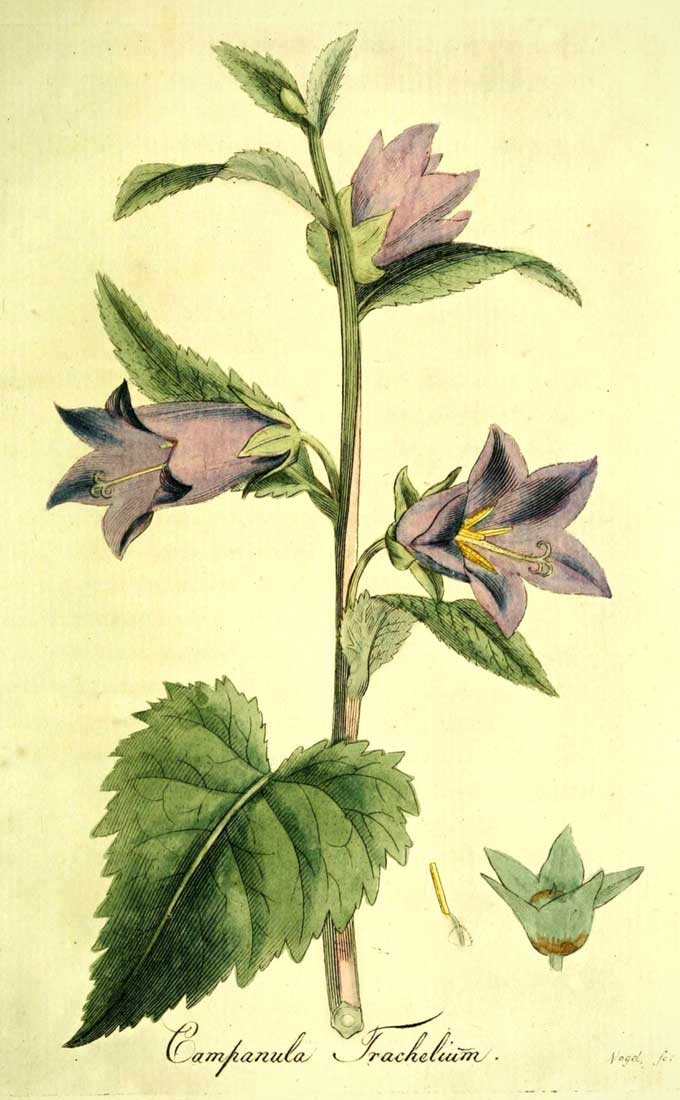
Campanula trachelium: botanical illustration
Bellflowers have a very variable habit and general appearance depending on the species! Some form mats, but they can also be trailing, while others have well-erect stems. These are plants that grow quite quickly. Bellflowers have a rather flexible, light, and airy habit, with relatively fine and elongated stems. The tissues of the bellflower often contain latex.
Bellflowers measure between 5-10 cm for the smallest, and 1.50 m for the largest… And even up to 2 meters or more for Campanula pyramidalis! Their use will therefore be very different, depending on their habit and height! The largest, such as Campanula pyramidalis or Campanula persicifolia, are perfect for borders, while the creeping species (Campanula poscharskyana, Campanula muralis…) are more suited for low walls or rockeries. But some bellflowers can also be grown in pots!
Bellflowers bloom in spring or summer, between May and September-October, depending on the varieties. Their flowering lasts a long time: often at least three months, but sometimes up to six months! Moreover, their flowering is abundant: it happens that the plants are literally covered with flowers, hiding their foliage (Campanula muralis…)!
The flowers are generally gathered in spikes or clusters at the ends of the stems, but they can also be solitary. They are densely grouped, like a bouquet, in Campanula glomerata.
The flowers come in a beautiful range of violet-blue shades, but they can also be white. The varieties with white flowers are very easily identifiable, as they are most often named ‘Alba’ (= white, in Latin): Campanula persicifolia ‘Alba’, Campanula carpatica ‘Alba’, etc. There are also species with pink flowers (Campanula takesimana ‘Elisabeth’ or Campanula ‘Ringsabell Mulberry Rose’). A few species offer yellow flowers, like Campanula sulphurea, but they are much rarer. The flowers are generally of a solid colour, which enhances the very “simple” (humble, unpretentious) aspect of the bellflower. In Campanula ‘Iridescent Bells’, the bells, mauve-silver in colour, contrast sharply with the dark purple flower buds. The inside of the flowers of Campanula punctata is speckled with red or pink dots!
The flowers can take on a bell, tubular or star shape. They are quite regular, with central symmetry. They consist of petals fused into a bell or tube, ending in five lobes (corresponding to each petal). These bells are surrounded by the calyx (sepals), which also forms five lobes. The flowers are hermaphroditic: they bear both female organs (pistil) and male organs (stamens). Thus, at the centre of the flower, there are five stamens and one pistil… But their maturity occurs at different times, in order to avoid self-fertilization. The inside of the corolla is hairy in Campanula barbata!
When the corolla is very open and deeply divided into five lobes, the flower takes on a true star shape, as in Campanula garganica. Conversely, the tube can be very elongated and thin, with little division (Campanula takesimana…). Sometimes, the flowers are cup-shaped, with a rather rounded form. The flowers are very original in the variety ‘Pink Octopus’: with very thin petals, cut into strips, resembling octopus tentacles!
There are also some varieties with double flowers, such as Campanula cochlearifolia ‘Elizabeth Oliver’ or Campanula trachelium ‘Bernice’. They have a very romantic and sophisticated, refined appearance. Similarly, haylodgensis bellflowers generally have double flowers!
Bellflower flowers are often drooping, directed towards the ground. This gives them a very humble aspect. But there are also species with flowers pointing towards the sky, or horizontal.

The flowers of bellflowers can take on quite varied forms! Campanula persicifolia ‘La Belle’ (photo Takashi M), Campanula garganica (photo Meneerke bloem), Campanula ‘Ringsabell Mulberry Rose’ and Campanula glomerata ‘Caroline’
Depending on the varieties, the leaves of bellflowers are oval, oblong or cordate (heart-shaped). They are simple, entire (not divided into leaflets), and are sometimes pubescent. The leaves are alternate, arranged one after the other on the stem. The edge of the lamina is often dentate, but it can also be smooth. Bellflowers can be evergreen, semi-evergreen or deciduous.
The size of the leaves is very variable. They are generally quite small in creeping species, from rock gardens (Campanula portenschlagiana, porscharkyana, carpatica…): between 1 and 5 cm long; while they are larger in upright perennials: often between 7 and 15 cm in length.
The shape of the leaves can also be very variable on the same plant. Those at the base are generally larger and wider, while those located at the top of the stem are often smaller and narrower. Some species describe the shape of the leaves in their Latin name: Campanula persicifolia = with peach-like leaves; Campanula rotundifolia = with round leaves; Campanula latifolia = with broad leaves; Campanula cochleariifolia = with cochlear-like leaves; etc. This makes it easier to differentiate them.
Although the leaves of most species are green, Campanula garganica ‘Dickson’s Gold’ has beautiful golden foliage, extremely bright!

The leaves of some bellflowers: Campanula rapunculoides (photo Hectonichus), Campanula latifolia (photo Salicyna) and Campanula portenschlagiana (photo Salicyna)
After flowering, the bellflower produces a capsule that opens when ripe, releasing many small seeds. Bellflowers can self-seed spontaneously!
The main varieties of campanulate flowers
These campanulas have upright stems and often spike-like flowers. They can sometimes be very tall (up to 1.5 m or 2 m for Campanula pyramidalis). They thrive in rich, fertile, light, well-draining but relatively cool soil.
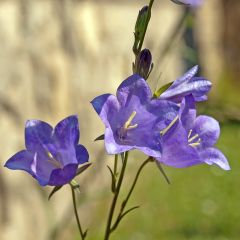
Campanula persicifolia
- Flowering time July to September
- Height at maturity 80 cm
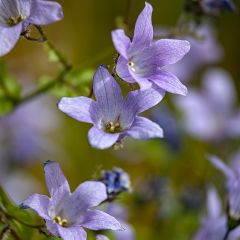
Campanula lactiflora Prichards variety
- Flowering time August, September
- Height at maturity 1 m
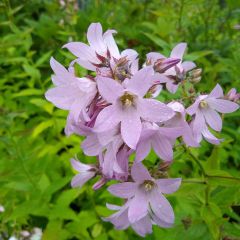
Campanula lactiflora Loddon Anna
- Flowering time August, September
- Height at maturity 1 m
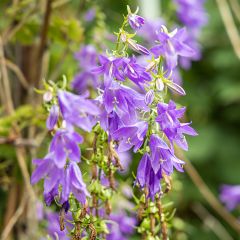
Campanula trachelium
- Flowering time July to September
- Height at maturity 75 cm
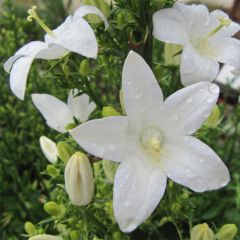
Campanula pyramidalis Alba
- Flowering time July to September
- Height at maturity 1 m
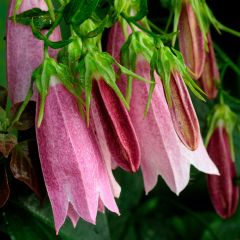
Campanula takesimana Elizabeth
- Flowering time July to September
- Height at maturity 40 cm
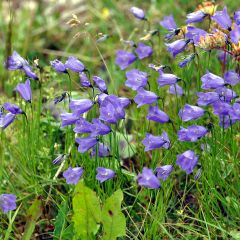
Campanula rotundifolia
- Flowering time July to November
- Height at maturity 30 cm
These species thrive in well-draining, even dry soil: they find their place in rockeries, between paving slabs, in the cracks wedged between the stones of a wall, in containers on a sunny terrace, or sometimes simply at the edge of a border. They have a cushion or spreading habit, and depending on the varieties, can be completely covered in flowers!
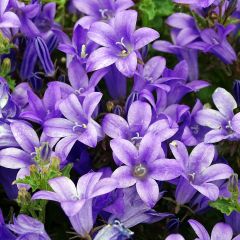
Campanula portenschlagiana
- Flowering time July to October
- Height at maturity 20 cm
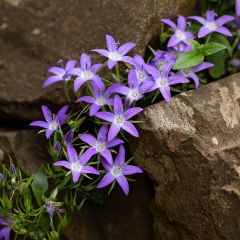
Campanula poscharskyana
- Flowering time June to October
- Height at maturity 30 cm
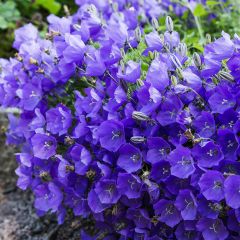
Campanula carpatica
- Flowering time July to September
- Height at maturity 25 cm
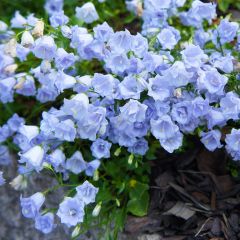
Campanula cochlearifolia Elizabeth Oliver
- Flowering time July to September
- Height at maturity 15 cm
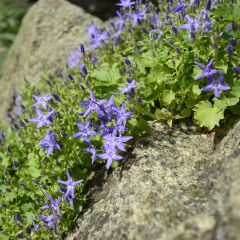
Campanula garganica
- Flowering time July, August
- Height at maturity 15 cm
Discover other Campanula - Bell Flower
View all →Available in 0 sizes
Available in 0 sizes
Available in 2 sizes
Available in 0 sizes
Available in 0 sizes
Available in 2 sizes
Available in 0 sizes
Available in 1 sizes
Available in 1 sizes
Available in 2 sizes
Planting
Where to plant campanulas?
Plant campanulas in full sun or partial shade. Flowering is often more generous in full sun, but direct sunlight can cause the flowers to fade; they will have a more vibrant hue in partial shade! Avoid scorching sun. Campanula latifolia is one of the most suitable for shaded situations.
Campanulas are quite undemanding regarding soil type. We recommend planting them in well-draining soil, as they do not like stagnant moisture. The location you choose for your campanulas will differ depending on whether you are dealing with tall upright varieties or small rock garden campanulas.
In the first case, they will find their place in a border, in fertile, well-draining but cool, light, humus-bearing soil. As these are relatively tall plants, it is best to position them sheltered from the wind. Lactiflora campanulas appreciate rich soils.
Small campanulas with a spreading habit will find their place in a rock garden, or between the stones of a wall, an outdoor staircase, or paving… You can also plant them at the edge of a border. They prefer well-draining, relatively dry soils. They are very undemanding and can grow in shallow soil.
Relatively compact campanulas, such as Campanula poscharskyana, can also adapt to pot or container planting.
When to plant?
The best time to plant campanulas is in autumn, around October; however, it is also possible to do so in spring. Annual species can be sown directly in place in spring.
How to plant?
We recommend maintaining a planting distance of about 25 cm for the more compact species, and rather 35-40 cm for the taller ones… Even 40-50 cm for large Campanula lactiflora.
- Place the root ball in a basin filled with water.
- Dig a planting hole. For rock garden species, feel free to improve drainage by adding some coarse sand, gravel, or pumice.
- Position your campanula in the planting hole. The collar should be level with the soil (avoid burying it).
- Replace the soil all around and firm it down.
- Water.
- Optionally, apply a mulch.
You can also grow campanulas in pots or containers.
Care of campanula plants
Campanula generally requires very little maintenance. Any necessary operations are quite basic… Easy to care for, it is a low-maintenance plant!
Remove faded flowers, both for aesthetic reasons and to prolong flowering (this encourages the appearance of new flowers). Similarly, once flowering is over, it is sometimes preferable to prune the stems to promote a second flowering and encourage the plant to ramify.
Campanulas can generally do without watering (especially the ground-cover and rock garden varieties). However, we recommend watering in cases of significant drought. Likewise, in the weeks following planting, it is advisable to carry out some watering until the plant is well established. Don’t hesitate to apply a mulch at the base of your campanulas to keep the substrate fresh for longer.
The larger species may require staking (Campanula pyramidalis, etc.). Additionally, the inflorescences of Campanula takesimana sometimes tend to flop over in the rain. You may need to support them with stakes.
You can add well-decomposed compost in spring. This will encourage generous flowering.
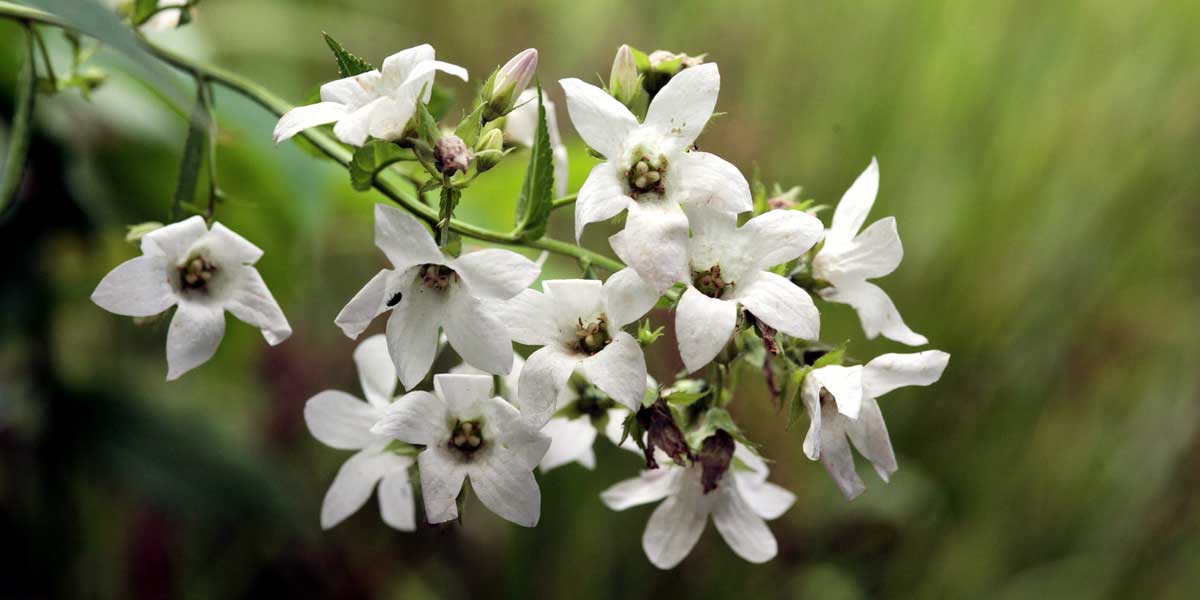
Campanula lactiflora ‘Alba’
Diseases and pests
Regarding pests, it sometimes happens that slugs and snails nibble on campanulas! To protect your young plants, you can make a slug trap. They can also be affected by froghoppers, small insects that pierce the plant tissues to extract sap. They can be identified by the presence of a white foam, resembling spit, on the plant stems. Aside from the unsightly appearance, the damage is relatively minor. Campanulas are also sometimes attacked by vine weevils, a beetle whose larvae chew on the roots while the adults consume the foliage.
Some species of campanulas can be affected by rust. This is Coleosporium campanulae, a fungal disease that is identified by the presence of rust-coloured spots on the leaves. The larger varieties seem to be the most affected, particularly Campanula persicifolia or Campanula latifolia. As this disease is favoured by humidity, we advise you not to overwater your campanulas, and especially to avoid wetting the foliage. Campanulas are also susceptible to powdery mildew. This fungal disease is characterised by the appearance of a white fluff on the leaves. To combat these two diseases, we suggest removing the affected leaves and spraying a solution based on sulphur or a horsetail decoction. Finally, some campanulas are sensitive to sclerotinia, also known as “white rot.” If you notice its presence, it is best to uproot and remove the affected plants.
Multiplication: sowing, division, propagation by cuttings
You can multiply campanulas by sowing, division, or even by propagation by cuttings. They may tend to self-seed, especially if you leave the faded flowers in place!
Sowing
Sow campanulas in spring, from April to June. Annual species are sown directly in place, while perennials and biennials can be sown under a frame (or in open ground if you live in a region with a mild climate).
If you are growing different horticultural varieties, especially if their flowers are of different colours, we recommend division or propagation by cuttings to ensure you obtain an identical new plant.
To sow campanula in a pot:
- Prepare a pot by filling it with special seed compost.
- Sow the seeds.
- Cover them with a very thin layer of substrate.
- Water gently, using a fine spray.
- Place the pot in a bright location, as the seeds require light to germinate. We recommend placing them under a cold frame. The substrate should remain slightly moist until germination.
- Transplant the young seedlings as soon as they are large enough to handle. You can then start to space out the watering.
- Plant them in their final location in early autumn (September-October).
To sow in open ground:
- Prepare the soil by refining it and breaking up large clumps. Also, add some compost. If you need to improve drainage, add some coarse sand.
- Sow (broadcast or in shallow furrows).
- Cover with a light layer of compost.
- Water with a fine spray.
- Continue to water regularly until germination.
- Then you can space out the watering further and thin the young shoots, keeping only the best developed ones.
Division of Clumps
You can multiply campanula by division in early spring, when the new shoots begin to appear. However, it is also possible to do this in autumn, around October, once flowering has finished. Spreading species are the easiest to divide! You can divide your campanulas every three years.
- Choose a large, well-developed clump, then dig wide enough around it to gently lift it from the ground without damaging the roots.
- Divide it into several fragments, by hand or with a knife. Be sure to keep enough roots each time.
- Replant in another location.
- Water generously.
Propagation by Cuttings
You can propagate campanula by cuttings in spring or early summer.
- Fill a pot with compost, press down lightly, then water to moisten it.
- Take a stem segment from the base of the plant, about 5 cm long.
- Remove the leaves from the bottom of the stem, if there are any. Keep only a few leaves at the top of the cutting.
- Optionally dip the stem in rooting hormone.
- Make a small hole in the substrate using a stick or pencil, then place your cutting in it.
- Press down around it to ensure good contact between the substrate and the stem, and to avoid air pockets.
- Place the cutting under a frame, out of direct sunlight. Keep the substrate slightly moist.
Associating Campanulas in the Garden
The largest campanulas (Campanula pyramidalis, Campanula lactiflora, etc.) are perfect for integrating into a colourful border alongside other perennials! Plant them towards the back of the border and take the opportunity to create a “cottage garden” atmosphere by pairing them with other blue or white flowering plants. Plant them with foxgloves, lupins, poppies, alliums, hardy geraniums… Also enjoy the airy flowering of gypsophila! Finally, with their light and delicate flowering, campanulas also pair very well with roses!
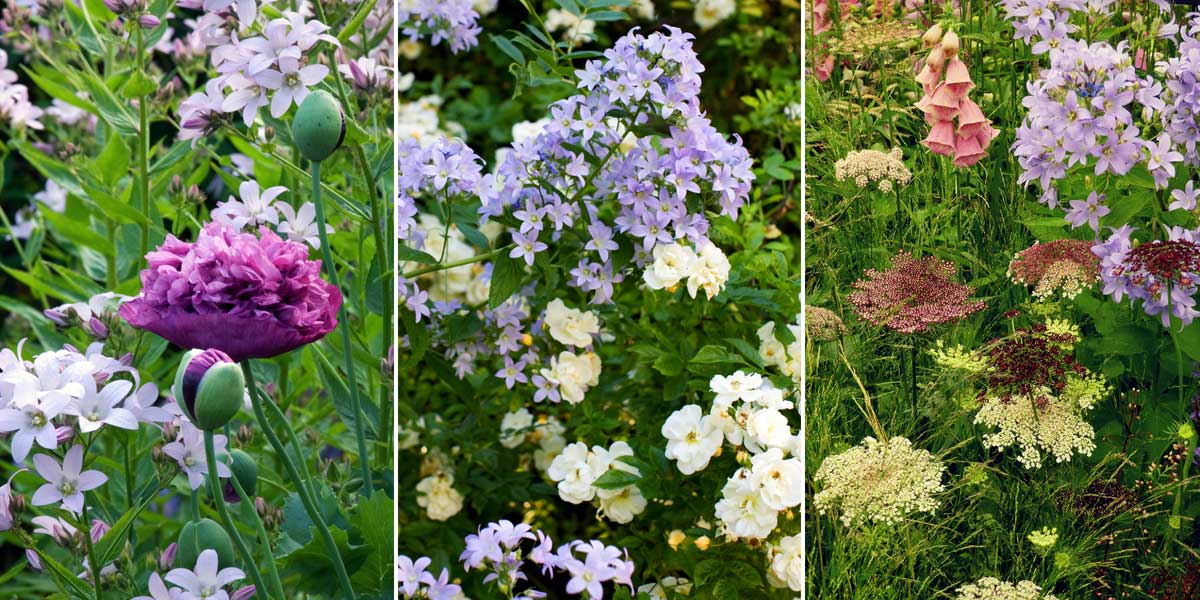
Campanula ‘Loddon Anna’ and poppy ‘Purple Peony’ (photo Fiona Lea – GAP) / Campanula lactiflora and Rosa ‘Opalia’ (photo Pernilla Bergdahl – GAP) / Daucus carota ‘Dara’, Foxglove and Campanula lactiflora
As campanulas have a rather natural look, they can easily be incorporated into a woodland garden. For example, choose Campanula trachelium or Campanula latifolia, two species that can sometimes be found in nature, in forests. Plant them alongside ferns, aquilegias, brunneras, or tricyrtis.
The campanula also finds its place in a naturalistic garden, with a rustic style. Pair Campanula rotundifolia with the light foliage of grasses (Pennisetum, Stipa…), and add some flowers: cornflowers and other centauries, poppies, scabious, hastate verbena (Verbena hastata)…
With their flexible stems and delicate flowering, campanulas allow you to create contrasts in shape and bring lightness to a very structured border. If your garden has a modern style, with very straight lines and neatly trimmed plants, you can plant a few campanulas in various spots (Campanula rotundifolia, Campanula trachelium or Campanula alliariifolia) to create a contrast by adding softness and lightness to the garden!
The small creeping campanulas (Campanula muralis, Campanula poscharskyana, Campanula carpatica…) can easily be installed on a wall or within a rockery, alongside saxifrages, phlox, houseleeks, or aubrietes… The campanulas will enliven the rockery with their colourful flowering, which lasts a long time, without requiring much maintenance!
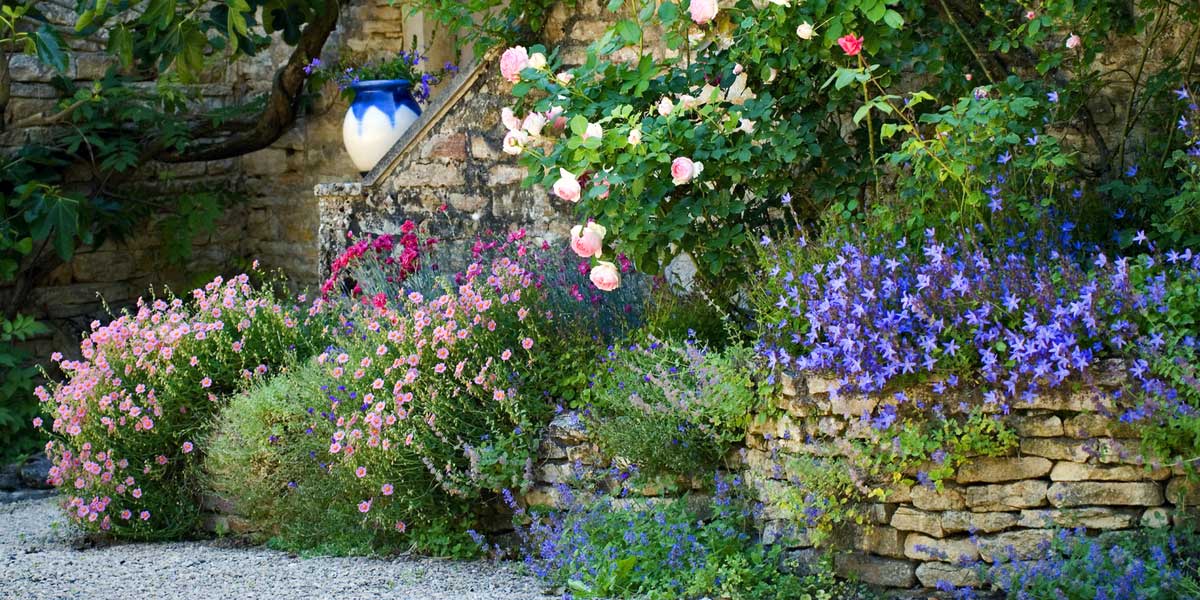
You can create a beautiful mineral scene by pairing a rockery campanula with rose ‘Pierre de Ronsard’, Helianthemum ‘Lawrenson’s Pink’, Nepeta racemosa ‘Grog’, and Dianthus ‘Romeo’ (photo E. Gonnet – Biosphoto)
The species with a creeping habit can also make a beautiful, very colourful border! You can easily create a perennial border, and at the edge of the border, slightly outside, even spilling over onto a path or paving, plant for example Campanula muralis all around to create a “belt” of blue-violet flowers…
Finally, if you are short on space in the garden or simply wish to flower your terrace, window sill, or balcony, you can install small campanulas in pots or window boxes. For example, plant Campanula poscharskyana with carex, muhlenbeckia, agathaea, nigellas…
→ Discover more pairing ideas with campanulas in our advice sheet
Did you know?
- An edible campanula!
The rampion bellflower, Campanula rapunculus, is a biennial that was once commonly grown in Europe as a vegetable. The leaves can be eaten in salads, while the roots can be consumed raw or cooked in water. The flowers can also be used to decorate dishes.
Useful resources
- Discover our range of campanulate flowers!
- Our campanulate seeds!
- An interesting article on campanulate flowers
- Our advice sheets: 6 campanulates with blue-violet flowers, campanulates with pink flowers, 6 white campanulates
- Our advice sheets: 7 tall campanulates for the back of borders, 6 campanulates for borders, 6 ground-cover campanulates
- Our advice sheets: Campanulates with bell-shaped flowers, 7 campanulates with star-shaped flowers
- Our advice sheet: Pairing campanulates
- Our advice sheet: Growing a campanulate in a pot
- Our advice sheet: the most beautiful campanulates
Frequently asked questions
-
The foliage of my campanulate is marked with yellow or rust-coloured spots! What should I do?
This fungal disease is aptly named as it is rust, particularly Coleosporium campanulae, a fungus characterised by the appearance of yellow or orange spots on the upper side of leaves, and on the underside, small rust-coloured pustules with a powdery appearance. To counter the progression of the disease, cut and burn the affected parts, then spray the foliage with a solution based on sulphur or a horsetail decoction.
-
The leaves of my campanulate seem cut, devoured!
It is likely to be slugs and snails, which enjoy nibbling on the foliage of campanulate plants. You can set up a beer trap. It is also possible that this is caused by caterpillars.
-
Can I grow campanulate plants in pots?
Campanulas are low-maintenance plants; you can easily grow them in pots or window boxes, but we recommend choosing the most compact varieties, such as Campanula poscharskyana.
- Subscribe!
- Contents
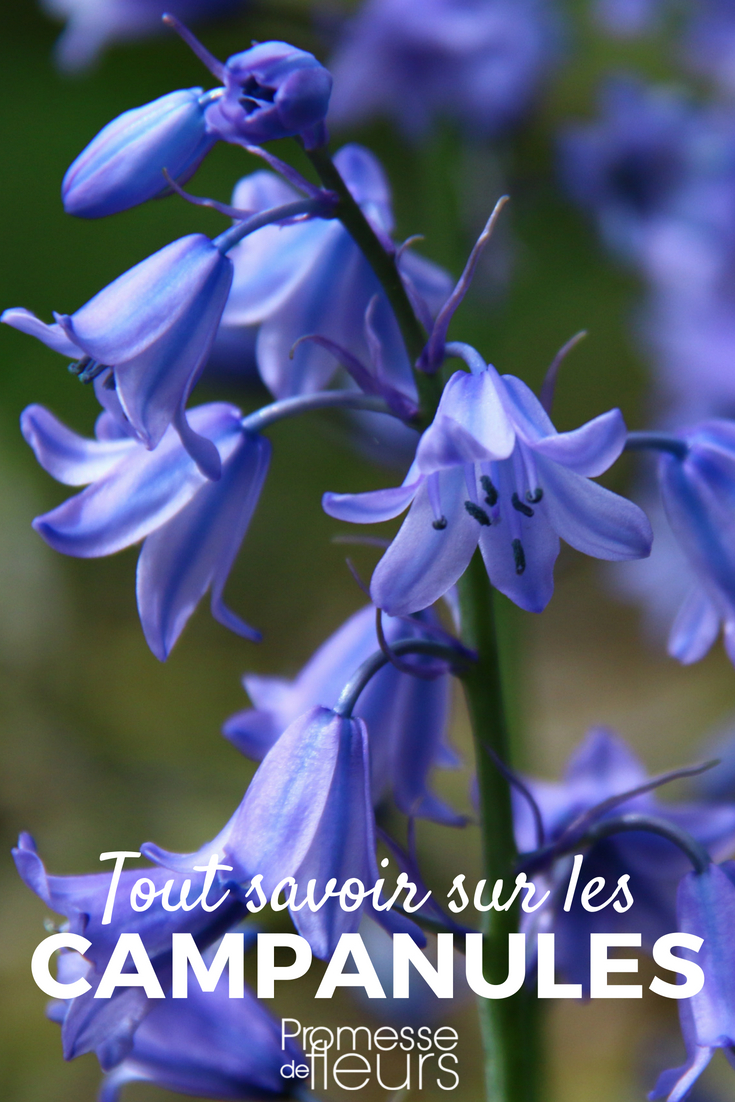































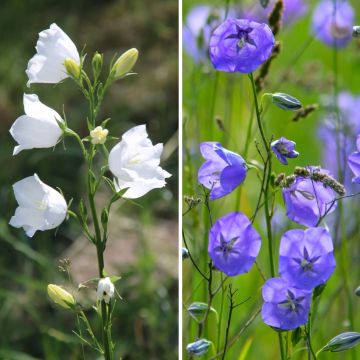
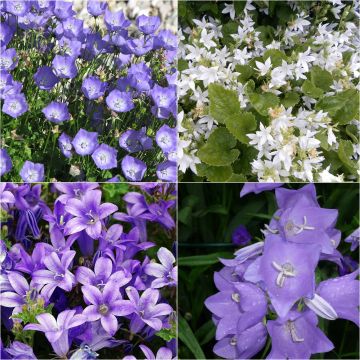

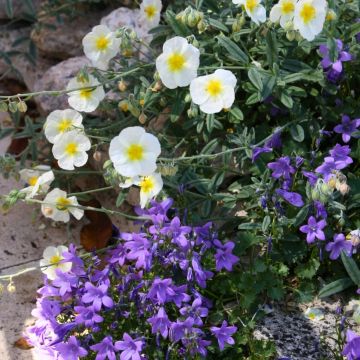
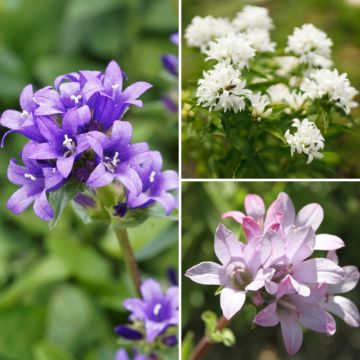

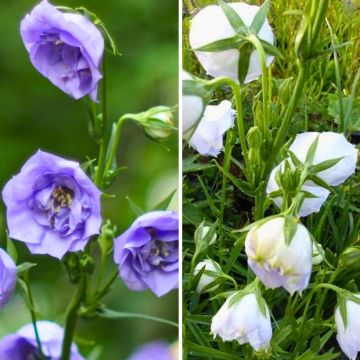
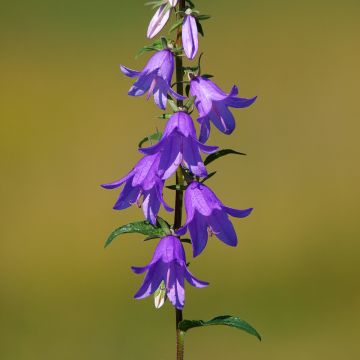
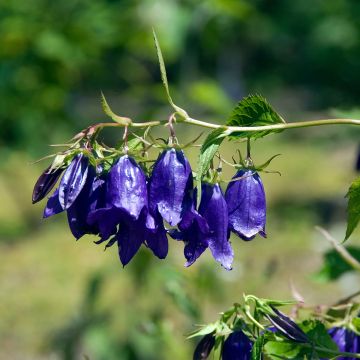

Comments